WD TV Live Plus: Western Digital's Latest Media Player Reviewed
by Cameron Butterfield on July 29, 2010 1:00 AM EST- Posted in
- Home Theater
- Media Streamer
- WD
- WD TV Live Plus
Disassembling the WD TV Plus reveals a passive heatsink design, which is preferred in this class of device since there is no fan noise to distract from the viewing experience. The heatsink found within the unit is comparable to the size of a standard northbridge heatsink found on modern motherboards. The device is well built, the plastic is thick and durable, and the chassis has very little wasted space, which helps it keep a very small footprint. The device also uses metal foil tape to connect the tray to the metal portion of the frame of the device which may also help to distribute some of the heat. Once the heatsink is removed we can see the Sigma Secure Media Processor in the center of the mainboard. Also of note, we see that the unit uses Hynix DDR memory chips, and a RTL8201EL Realtek NIC controller. The Realtek RTL8201EL is a single-chip/single-port Fast Ethernet PHYceiver that is capable of operating at 10/100Mbps, full/half duplex, auto-negotiation and power down modes.
The WD TV Live Plus uses the same clamshell style design that many of their HDD products such as the MyBook line.
Within the plastic casing, a metal tray and cover exist to hold the mainboard
The heatsink and mainboard
The back end of the mainboard.
The processor and memory chips uncovered.
The WD TV Live Plus has a Sigma Media Processor, a chip designed for IPTV, cable, thin clients and media players. This processor architecture is built for low power operation and boasts advanced content protection, digital rights management and a wide list of media format capabilities.
The WDTV Live Plus is almost identical to the WDTV Live, the only apparent difference being the change in processor model number. The Plus version utilizes a Sigma SMP8654 media processor, while the previous WD TV Live version utilizes the SMP8655. Although the SMP8655 has a higher model number, the additional digit actually signifies that it is the Non-Macrovision version. Utilizing the SMP8654 Sigma processor rather than the SMP8655 previously used in the WD TV Live HD is essential for doing the two things that the Plus version of WDTV Live is capable of doing in addition to the features it's predecessor already supported, namely Netflix streaming. We reason that WD had to release the WD TV Live Plus with a new processor because there is no content protection available otherwise for the composite output. This output is analog in nature, and Macrovision is meant for analog output protection. On HDMI, HDCP is more than enough. It is likely that the older WDTV Live HD could have supported Netflix with just a firmware update, but would not have been able to protect the content over composite signals.
Here is a layout of the Sigma Processor architecture followed by a list of features and specifications:
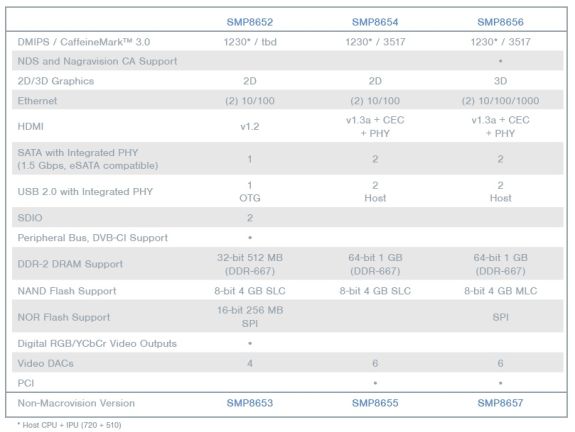
The SMP8654 media processor has 1GB of built in DDR-667, and has interface support beyond the capabilities that it is utilized in WDs implementation. One of those features that would have possibly added value to a device like the WD TV Plus is the SATA IO support. This capability could have possibly been utilized to provide an eSATA interface, allowing further support for Western Digitals HDD products such as the eSATA myDVR expander and other eSATA devices supplied by Western Digital.


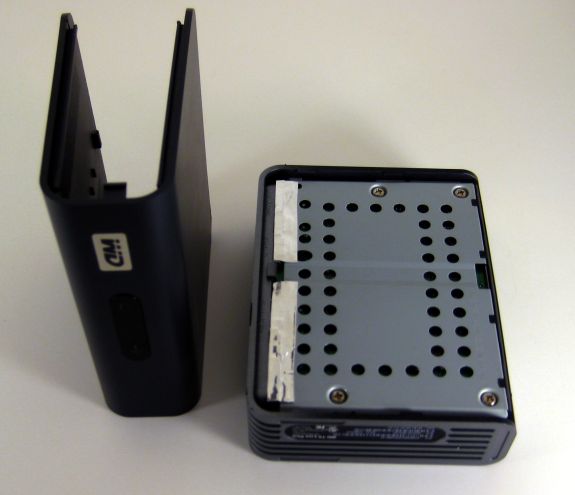
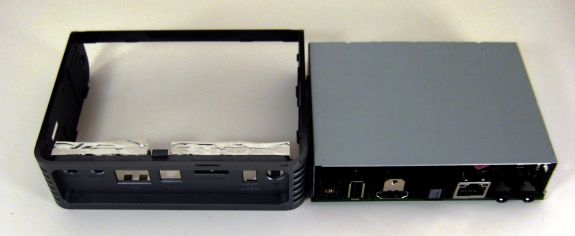
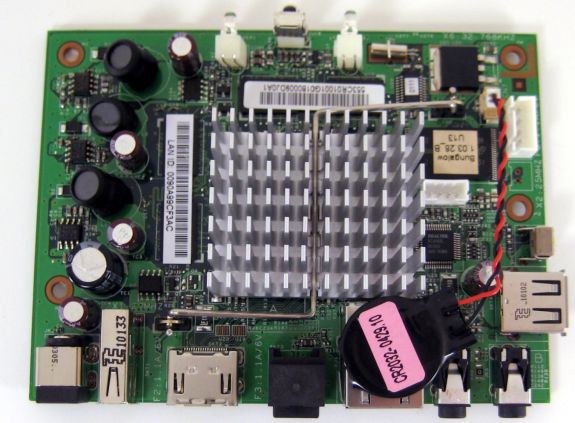
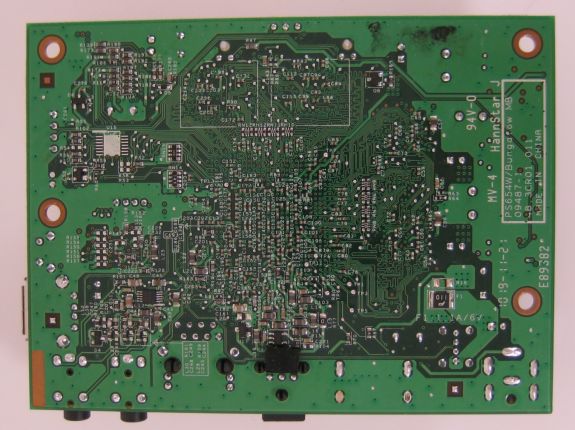
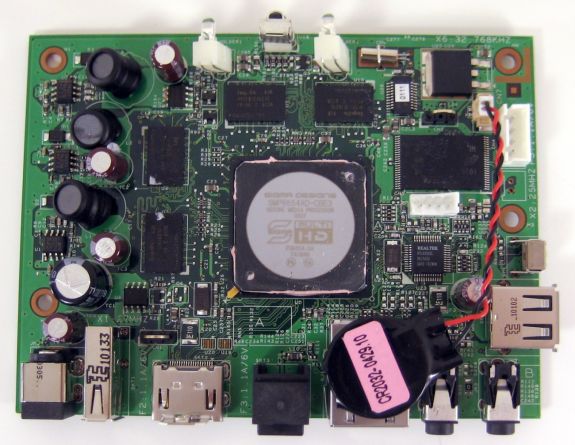
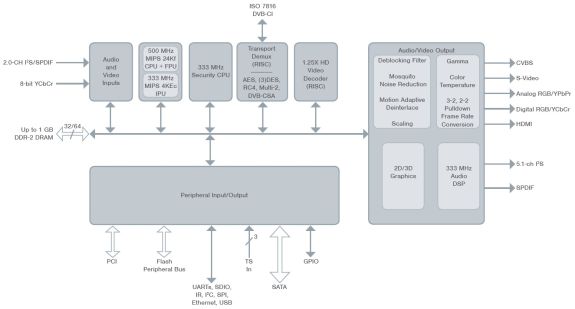








81 Comments
View All Comments
Decaff - Thursday, July 29, 2010 - link
I definately second this.Most of the commentaries I've seen around point to the PlayON being a far better player, though some people claim the WDTV to be better, but doesn't back it up.
Also, the Popcorn boxes are often regarded as being superior (probably due to the higher pricetag), but I haven't seen any solid confirmation of it anywhere.
So keep up the good work. I'm loving these articles.
jo-82 - Thursday, July 29, 2010 - link
Why would i want to let my normal machine run all the time? If i use a USB-attached one i have the mess auf more Cables and an additional device.Dear WD: Put a 2,5" Drivebay (Hotswappable would be nice) inside and we have a deal. Especially as a Device for Parents und and Friends...
probedb - Thursday, July 29, 2010 - link
Some of us have these things called fileservers or NAS boxes. If you want an internal drive why are you even looking at this as that's not what it's for???dvinnen - Thursday, July 29, 2010 - link
These type devices are geared toward people who have media servers (i currently use a 7 year old machine running linux and a ton of storage and it works great). Also to get you to purchase a WD external HD.Internal storage wouldn't work unless they added NAS functionality to it. Hot swapping drives to put media on it and bring it back to the player just sounds like a bad idea.
saiga6360 - Friday, July 30, 2010 - link
Did you happen to see the price tag? You want something like, you will have to pay more for like a Popcorn Hour or a Dune.Finite Loop - Thursday, July 29, 2010 - link
I had been looking for the WD TV Live, but it was sold out everywhere and nobody had any backorders for it. I went with the AC Ryan Playon HD mini.It would have been nice if the article discussed playback over the LAN connection. The AC Ryan performs well over its (100Mb) LAN connection except for 1080p content where fast action scenes may exhibit block-effects. The only content the AC Ryan doesn't seem to play (whether from LAN or USB) is stereoscopic video which causes the player to freeze.
I was hoping this WD "Plus" version would have a gigabit connection. Without gigabit, the increase in price in comparison to the previous version doesn't seem to be justified. Additionally, the AC Ryan comes with an HDMI cable which I would have had to purchase separately had I gone with a WD TV Live model.
It's interesting the article mentions the chip(s) in the WD TV Live Plus however a comparison with chips used in other devices would be appreciated. Why does this device require 1Gigabyte of memory while the AC Ryan mini operates with only 128MB? What's the difference between the video decoding chip in this player and other players?
cbutters - Thursday, July 29, 2010 - link
You can get the WD TV Live Plus for 119 at newegg with a free 8GB thumb drive.I'm not entirely sure that gigabit is an important feature here, with bluray video streams maxing out at 40mbps and averaging less than 30, there seems to be little benefit of increasing the 100mbps connection to 1000 as the bandwidth would go unused. However this is something that we hope to examine further in future articles.
Saltbread - Thursday, July 29, 2010 - link
I'm assuming that the Core 100 refers to the Asrock product reviewed before and the column should actually be labled Live Plus or something like that. My apologies if I am incorrect.ganeshts - Thursday, July 29, 2010 - link
This has been fixed. Thanks for pointing out.ned14 - Thursday, July 29, 2010 - link
These low end media boxes mainly come with one of two chipsets: Sigma and Realtek with the former being more expensive. The problem isn't the hardware, it's more the manufacturer supplied firmware where the Sigma one is good, whereas the Realtek one was written by incompetent chimpanzees. Anyone who has used both types of box will know exactly what I mean.There is a brand new third option though - the Amlogic chipset. Its firmware is spartan, but due to its simplicity is seems to "just work" and it looks better than the Realtek's but not as good as the Sigma. The specs of the Amlogic I bought is detailed here at http://www.iboum.com/pr/nation2.php.
My first problem with the WDTV Live, as with anything costing more than US$70, is that for that price it really ought to have an internal drive bay so you don't have to faff around with external USB drive solutions. My second problem is with anything costing more than US$100 when for less or even not much more you can pick up a second hand P3 based quiet computer off ebay or a second hand games console both of which are far better media playing solutions. After all, Boxee and/or XBMC can be downloaded and installed on most things, so a DIY solution is often better here.
The only remaining argument is that these boxes are small and easily transportable e.g. to a friend's house in a way that PCs and game consoles are not. And here's my third problem with these boxes: top end smartphones are increasingly able to serve content either through HDMI or DNLA or both, and you can't beat a phone for portability.
Now if you can pick up a tiny light box for US$70 AND it has an internal drive bay AND it can play off of a DNLA server such as a phone - e.g. the Amlogic box I bought - then you might be on to something because it can act as a simple TV driver for media living elsewhere while still having the flexibility to act as a cheap NAS box too if desired. And what few bugs it has in its firmware have been fixed quickly as they seem to be operating a quarterly firmware release schedule. Personally I have been pleasantly surprised considering the price.
Oh, and it plays RMVB just fine. I have a huge collection of South Park in RMVB, and while they're a little blocky on my 1080p TV due to the low bitrate that is hardly the player's fault!
Cheers,
Niall